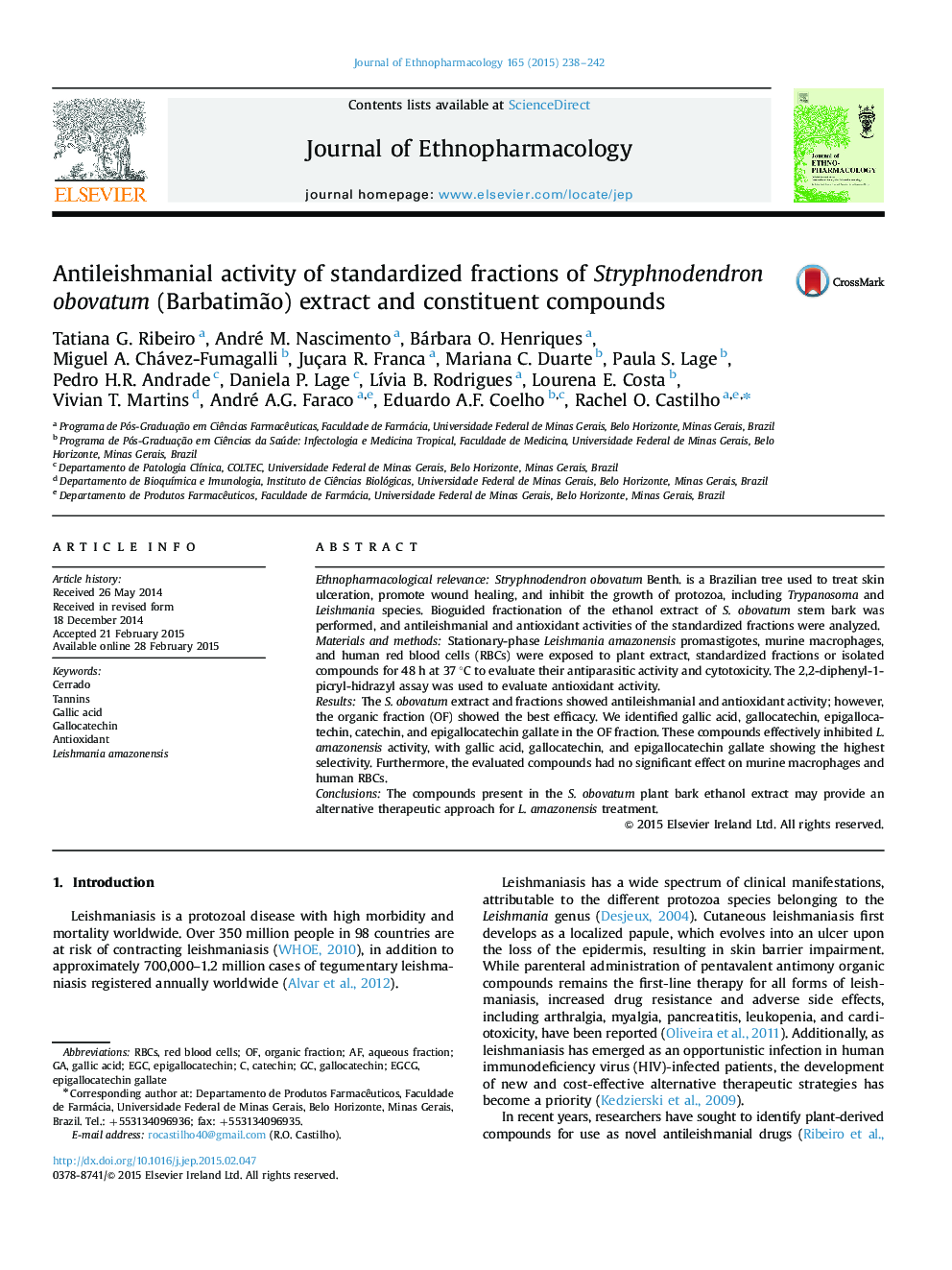| Article ID | Journal | Published Year | Pages | File Type |
|---|---|---|---|---|
| 2545072 | Journal of Ethnopharmacology | 2015 | 5 Pages |
Ethnopharmacological relevanceStryphnodendron obovatum Benth. is a Brazilian tree used to treat skin ulceration, promote wound healing, and inhibit the growth of protozoa, including Trypanosoma and Leishmania species. Bioguided fractionation of the ethanol extract of S. obovatum stem bark was performed, and antileishmanial and antioxidant activities of the standardized fractions were analyzed.Materials and methodsStationary-phase Leishmania amazonensis promastigotes, murine macrophages, and human red blood cells (RBCs) were exposed to plant extract, standardized fractions or isolated compounds for 48 h at 37 °C to evaluate their antiparasitic activity and cytotoxicity. The 2,2-diphenyl-1-picryl-hidrazyl assay was used to evaluate antioxidant activity.ResultsThe S. obovatum extract and fractions showed antileishmanial and antioxidant activity; however, the organic fraction (OF) showed the best efficacy. We identified gallic acid, gallocatechin, epigallocatechin, catechin, and epigallocatechin gallate in the OF fraction. These compounds effectively inhibited L. amazonensis activity, with gallic acid, gallocatechin, and epigallocatechin gallate showing the highest selectivity. Furthermore, the evaluated compounds had no significant effect on murine macrophages and human RBCs.ConclusionsThe compounds present in the S. obovatum plant bark ethanol extract may provide an alternative therapeutic approach for L. amazonensis treatment.
Graphical abstractFigure optionsDownload full-size imageDownload high-quality image (223 K)Download as PowerPoint slide
